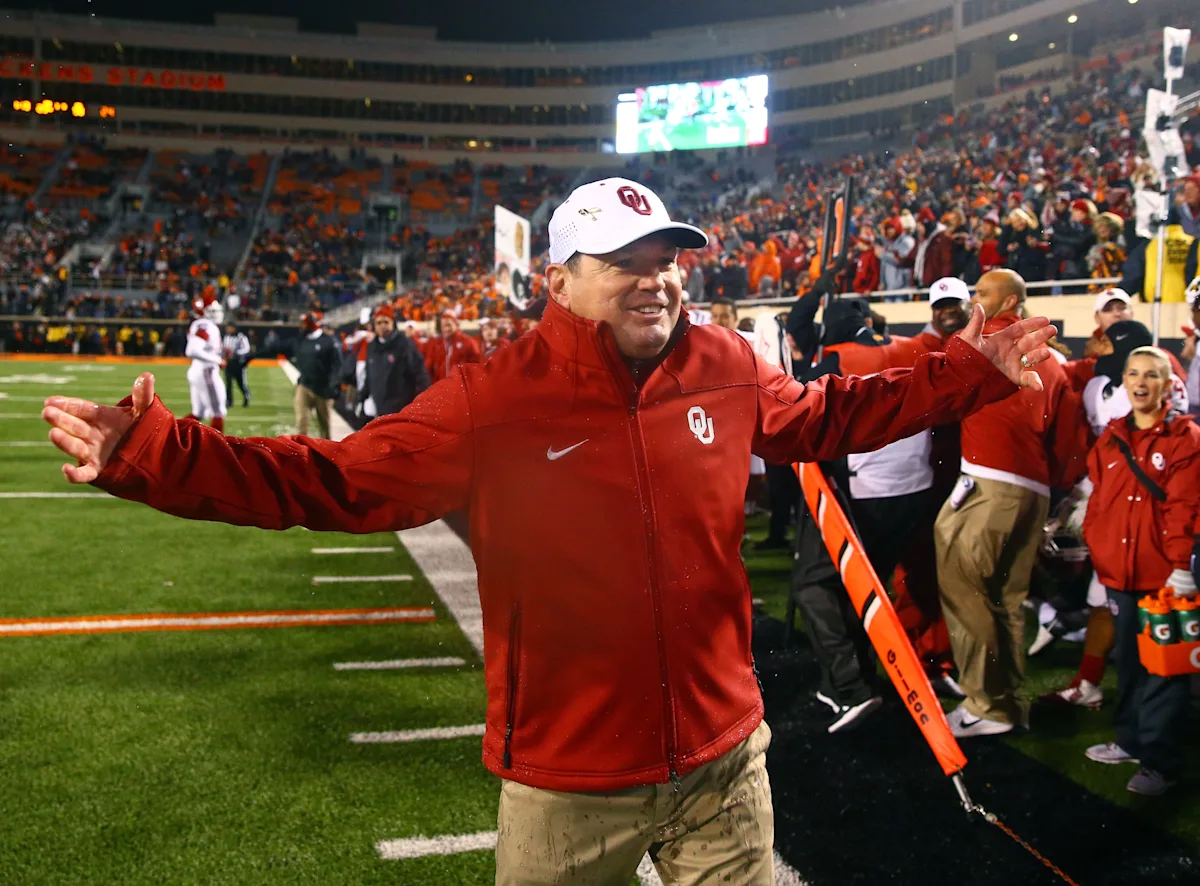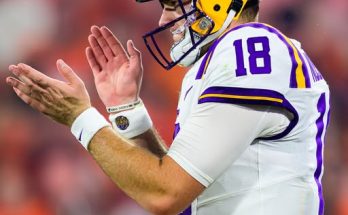The University of Oklahoma finds itself at a pivotal crossroads, not only on the playing field but also within the walls of its athletic administration. After the resignation of longtime Athletic Director Joe Castiglione, speculation has surged regarding who might step into the massive shoes he leaves behind. Among the names floated most frequently in media circles and among passionate Sooners fans is former head football coach Bob Stoops—a figure synonymous with Oklahoma excellence and competitive grit. However, in a move that surprised many and disappointed some, Stoops recently announced he is not interested in pursuing or accepting the school’s open athletic director position. His decision sends a ripple across the collegiate athletics landscape, not only because of his stature within the Oklahoma community but also because of what it signifies about the future direction of the Sooners’ athletic department and Stoops’ own trajectory post-coaching.
Bob Stoops is more than just a former head coach at Oklahoma. He is a symbol of sustained success, of rebuilding and reshaping a program that had begun to drift before his arrival in 1999. Over the course of nearly two decades, Stoops amassed a record of 190–48, brought home 10 Big 12 championships, and led the Sooners to a national title in 2000. He coached Heisman Trophy winners, developed countless NFL draft picks, and reestablished OU as a blueblood of college football. His impact is deeply embedded in the DNA of Oklahoma athletics. So when an opening like this arises, it is only natural that he would be considered a top candidate. His leadership, reputation, and intimate knowledge of the university are unmatched. But sometimes, legacy isn’t enough to dictate future plans.
In a brief but definitive public statement, Stoops expressed gratitude for being considered and acknowledged the honor of being linked to such an important role. Yet, he was clear: his passion still lies outside the realm of athletic administration. While he remains close to the program and deeply supportive of OU’s mission, he emphasized that his current pursuits—ranging from business interests to media commentary and family commitments—would not allow him to give the athletic director position the full energy and commitment it requires. This decision, while personally motivated, also serves as a subtle commentary on the intensity and demands of the modern college athletic director role.
The job of an athletic director has evolved significantly over the last decade. It is no longer simply about hiring coaches and overseeing facilities. It now involves navigating Name, Image, and Likeness (NIL) regulations, building relationships with donors and corporate sponsors, managing compliance in an increasingly complex NCAA landscape, overseeing gender equity in sports, and preparing for the coming storm of athlete unionization and possible revenue sharing. The role requires someone with an acute understanding of both business and sports, someone comfortable in media-facing roles while also handling legal, financial, and human resources elements. For a coach who once ruled the sidelines and whose instincts are geared toward preparation, motivation, and competition, the nature of administrative work can feel distant and constrictive. Stoops has clearly assessed the landscape and determined that this role is not a fit for him at this stage in his life.
His decision also underscores a larger trend within collegiate athletics: former coaches or ex-players being hesitant to transition into administrative leadership. While their experience within the sport is vast and invaluable, many of them prefer to influence from the outside—through consulting, mentoring, or media roles—rather than take on the day-to-day grind of administration. Stoops has carved a niche for himself in exactly this way. His involvement with the XFL, occasional media appearances, and advisory presence around the Oklahoma program offer him the best of both worlds: proximity to the game without the bureaucratic burdens that come with an administrative post.
For Oklahoma, Stoops’ decision creates both a void and an opportunity. The void is emotional and symbolic—many fans had hoped the legendary coach might guide the program through its next era as it prepares to enter the Southeastern Conference. His charisma, institutional memory, and respect across the college football landscape would have made him an ideal ambassador during this high-stakes transition. But the opportunity lies in finding someone with a fresh perspective, someone who can handle the rigors of modern collegiate administration with vision and adaptability.
The next athletic director at Oklahoma will need to be both a steward of the program’s rich traditions and a reformer ready to push boundaries. With the SEC move looming, the stakes are higher than ever. Every aspect of Oklahoma athletics—from football to gymnastics to softball—will be competing in the nation’s toughest and most lucrative conference. The resources and visibility will increase, but so will the expectations and pressure. OU must continue to evolve, innovating not just on the field but in how it recruits, markets, and supports its athletes. Whoever is chosen must be a strategic thinker, a fundraiser, a communicator, and a fierce advocate for student-athletes.
There is also the question of culture. Castiglione’s departure leaves behind a leadership vacuum in a department that has long prided itself on integrity, family atmosphere, and competitive excellence. The next leader will need to earn the trust of coaches, athletes, alumni, and fans. They must respect the legacy while crafting a bold new chapter. This isn’t a job for a placeholder or a celebrity hire; it’s for a builder, a visionary who can navigate a changing sports ecosystem without losing sight of the university’s core values.
Stoops’ rejection of the role, while perhaps disheartening to those nostalgic for his glory years, may actually reflect his respect for the enormity of the task. Rather than stepping into a position out of obligation or sentimentality, he is allowing the university to search broadly and intentionally. And in doing so, he protects his legacy, ensuring it remains untarnished by the political and administrative battles that often come with the AD’s office.
Moreover, it’s likely that Stoops will still play an informal but influential role in shaping the athletic department’s future. His voice carries weight, his relationships with boosters and former players are strong, and his insights into coaching and competitive culture are timeless. Whether it’s helping Brent Venables maintain a winning program or providing guidance to university leadership during the AD search, Stoops will be around—on his own terms. That balance may actually serve Oklahoma better in the long run. Having a revered figure like Stoops accessible but not beholden to an administrative role creates space for new leadership while preserving continuity.
It’s important to recognize that not every legendary coach needs to transition into upper administration to remain relevant or impactful. The sports world is full of examples of icons who faltered in second acts because they couldn’t adapt or didn’t truly want the roles they took on. Stoops appears to be self-aware enough to avoid that trap. His statement wasn’t just a personal decision; it was a model of mature career thinking, of understanding one’s strengths, limitations, and life priorities. In a world where egos often drive decisions, Stoops showed humility and clarity.
The news will sting for a while, especially for those who dreamed of a seamless return of Stoops to campus leadership. But if anything, his absence from the race should sharpen Oklahoma’s focus. The university now has full license to conduct a wide-reaching, rigorous search for the next AD—one that may lead them outside the OU family or into unexpected corners of the industry. With the right hire, Oklahoma can continue to ascend as a powerhouse in college athletics. And when the dust settles, fans may come to appreciate that Bob Stoops knew something all along: sometimes, the best way to lead is not from the front office, but from just outside its door, offering wisdom when needed and letting the next generation shine.



